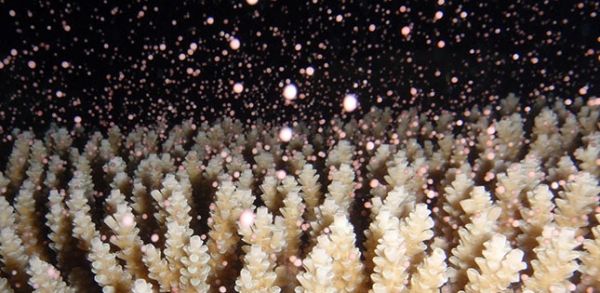During the early summer, corals simultaneously release tiny balls composed of sperms and eggs, known as bundles, that float to the ocean surface. Here the bundles open, allowing the sperm to fertilize the eggs where they eventually settle on the seafloor and become new coral on the reef.
This spectacular annual event is known as "mass-spawning," and usually occurs at night. Although the occurrence of mass-spawning happens around the time of a full moon, it is difficult to predict precisely when. Now, a research team from Tohoku University, Ochanomizu University, and the National Institute for Basic Biology have utilized modeling analysis to indicate that environmental factors act as a determinant in the timing of mass spawning.
"Coral spawning is a complex phenomenon," says Shinchiro Maruyama, an assistant professor at Tohoku University. "It is too complicated to model all the factors involved in a spawning event, so we decided to focus on which day they spawn. Although we know that they spawn a few hours after the dusk, the days can differ according to regions, and even within the same reef."
Read more at Tohoku University
Image Credit: Tohoku University


